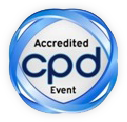
Dhruti Mistry
Uka Tarsadia University, India
Title: Reduction in radiation induced DNA damage in human peripheral blood lymphocytes by treatments of alstonia scholaris bark extracts
Biography
Biography: Dhruti Mistry
Abstract
It is well established that radiation exposure causes DNA damage. Compounds within certain plants have often been targeted as protectors against radiation induced DNA damage. In the present study, use of aqueous-methanolic extracts (50 µg per ml) from bark of Alstonia scholaris as radioprotectors has been reported. The cytogenetic parameters studied as indices for DNA damage were Chromosomal Aberrations (CAs) and Micronuclei (MN) frequency from human peripheral blood lymphocytes. Blood was irradiated to 0, 2, 4 and 6 Gy of X-rays radiation (Source: 6MV X-ray Photons, Siemens, Oncor Expression Medical Linear Accelerator). The irradiated samples were exposed to aqueous-methanolic bark extracts under three different situations: To rule out whether presence of components in extract may not allow the damage to take place, blood samples were irradiated, simultaneously exposed to extracts and then cultured; to rule out the possibility of possible DNA damage repair capability of extracts, blood samples were irradiated and cultured for 24 hours and then exposed to extracts; and to rule out the possibility of possible radioprotective properties of the extracts, blood samples were exposed to extracts first, cultured for 24 hours and then exposed to radiation. In all three conditions, we found that presence of extracts had significant contribution in the reduction of DNA damage, measured both as CAs as well as MN frequency. Since the study used crude extracts, number of compounds present in the extracts might have played a role, some as protectors, some as mitigators and still certain with DNA damage repair capabilities. Once the actual compounds present in the extracts be determined and their probable role be decided in reducing radiation induced DNA damage, new sort of drugs be formulated with potential to protect against radiation damage.

